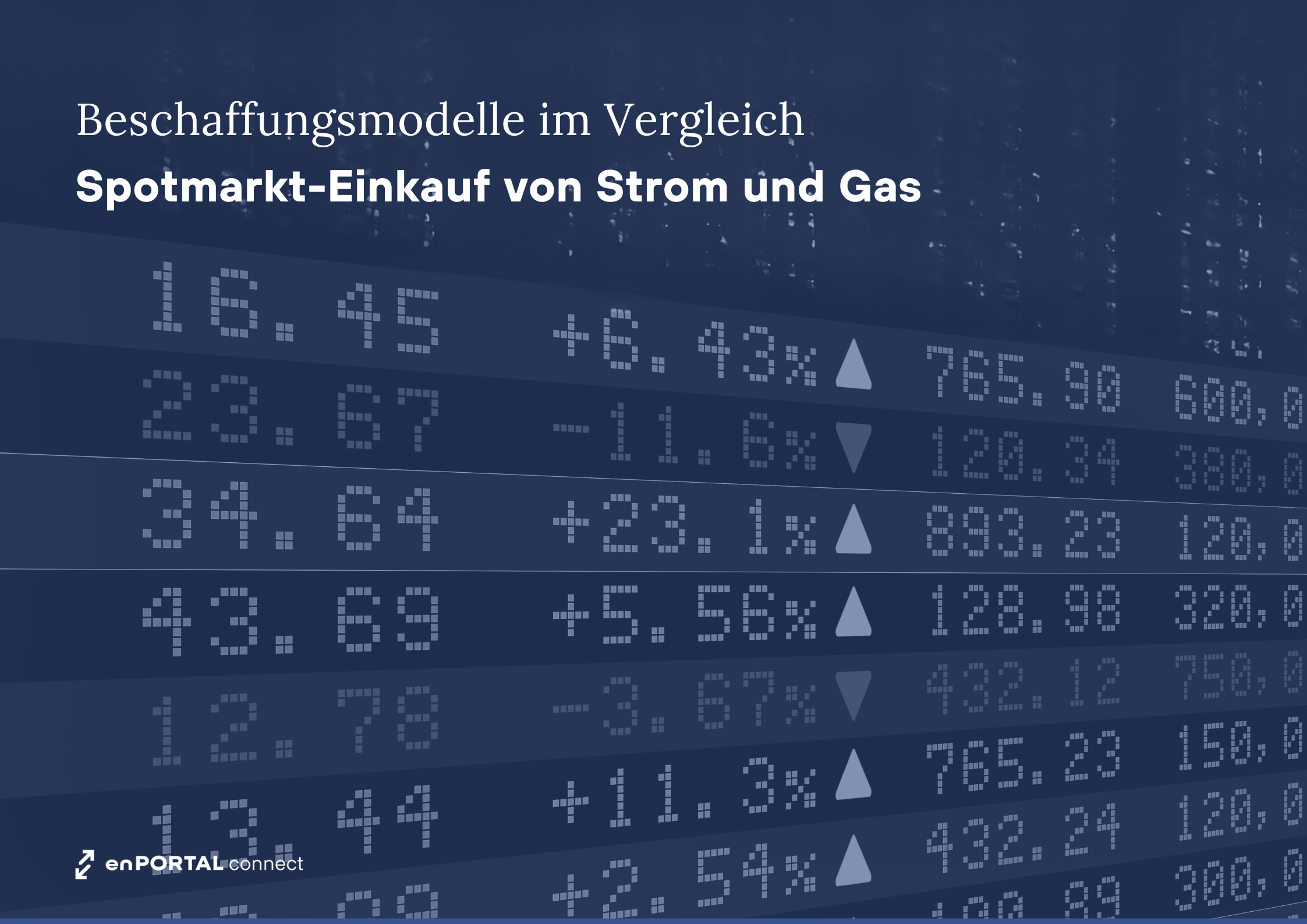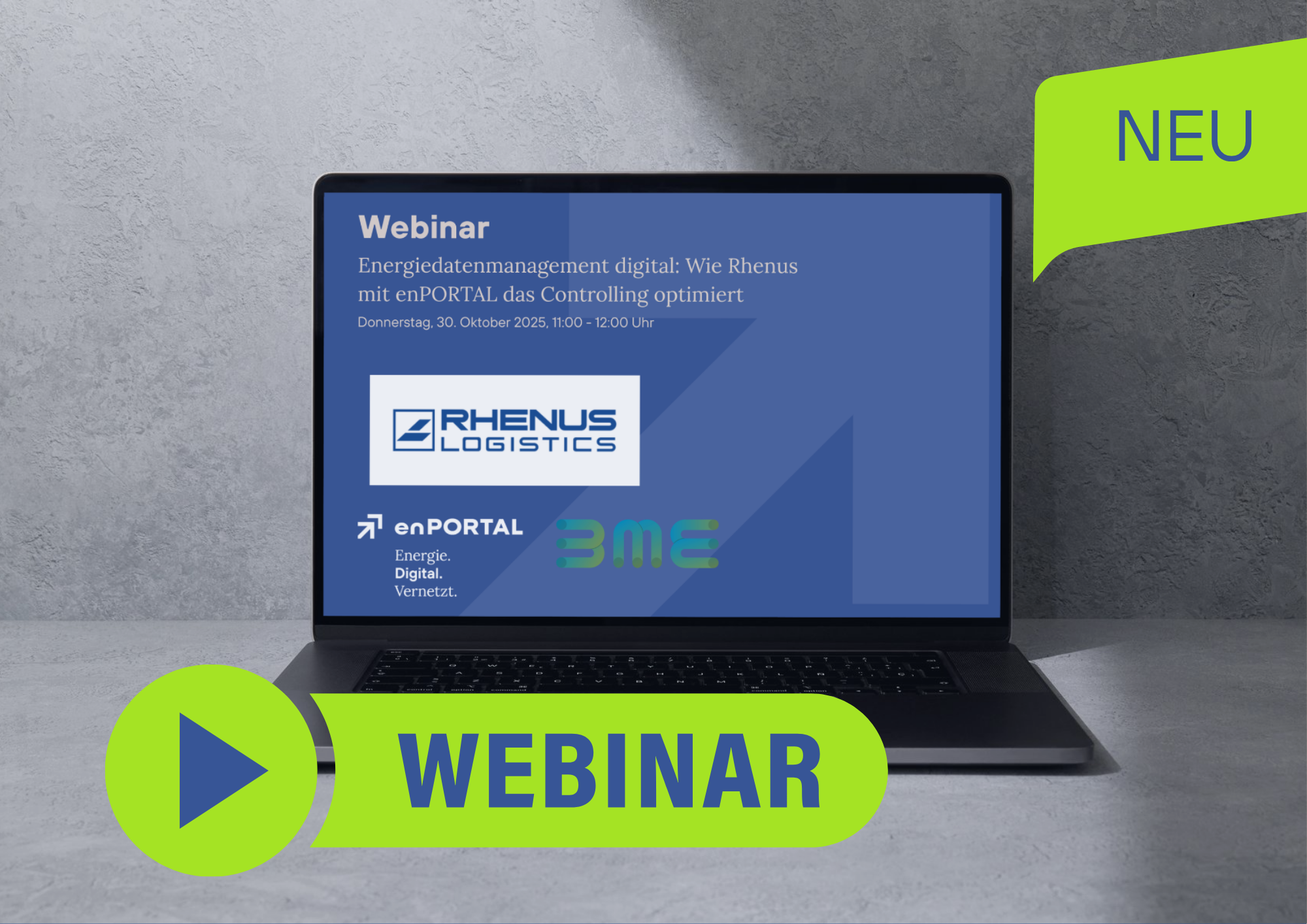This week we are looking at the spot market procurement model. Alongside fixed prices and tranches, it is another alternative for companies to procure electricity or gas.
Before we get into the topic, it is important to know that companies can procure 100 per cent on the spot market, but that spot market purchases can also be combined with tranches in a variety of ways. In this article, we will therefore focus purely on spot market procurement and explain how this can be mapped using digital platforms today, what the advantages and disadvantages are and which points need to be taken into account. We will be happy to explain the countless combinations and variations of procurement models to you in a personal dialogue, as the individual wishes and requirements of the company play a key role in the selection of a suitable strategy - as do the current developments on the energy market. It is therefore always necessary to clarify which variant makes sense for which consumption and company specifics on a case-by-case basis.
The article on spot market purchasing is deliberately kept short so that you can quickly familiarise yourself with the differences to the previously mentioned fixed price and tranche procurement models and understand what the main difference is from spot market purchasing (see the last two articles on LinkedIn or all articles on our press page Press and Insights - enPORTAL connect)
enPORTAL Note: During the 2022 energy crisis, there were phases in which only spot market offers were made by energy suppliers - this was due to risk minimisation on the part of energy suppliers and liquidity. With spot market purchases, energy suppliers do not need to hold energy volumes and the associated costs for the long term, but can settle immediately, which reduces the financial risk. This situation has now eased and the energy market is once again offering all procurement models.
What does spot market purchasing mean?
The central European spot market for energy is called the European Power Exchange (EPEX SPOT) and is based in Paris. Short-term deliverable electricity volumes are traded there in megawatt hours, which is the central difference to the other procurement models: it is about short term deliverable quantities of electricity, which are also priced at short notice, namely one day in advance in day-ahead trading. Only then is the price for a megawatt hour fixed. There is also intraday trading, which describes continuous trading up to 5 minutes before the quarter hour of delivery. The situation is similar for gas, but here hourly values are traded instead of quarter-hourly values.
This means that if a company decides in favour of spot market purchases, it needs a service provider to handle the spot market purchases. This is where the traditional energy suppliers apply as part of a tendering process. The customer pays a fixed fee for this service, generally referred to as a "surcharge on the exchange price".
This surcharge represents an additional price component that can be reduced through competition. As already described, there are various models for spot market purchases, which can be combined with tranches in a variety of ways, e.g. 80 per cent tranche purchase and 20 per cent spot market purchase for a delivery year through to pure spot market contracts. There are also various calculation models for spot market billing (hourly or monthly average). Both models have their advantages and disadvantages - depending on your personal load behaviour. This needs to be checked individually - energy experts usually support the respective customer in this process.
Competition makes the difference in margin
The greater the competition among energy suppliers in the course of this spot market tendering process, the lower the margins for processing are ultimately for companies. The electricity prices for consumption are then determined on a daily basis, which is why the energy costs are only fixed after the supply has been made. A company that procures all or part of its energy requirements via the spot market therefore only knows the exact cost of energy retrospectively at the end of the month.
Advantages and disadvantages of spot market procurement
- As an energy buyer, you do not know at the beginning of the month what you will pay at the end of the month. The energy costs are only ever known after the supply has been made. If you need planning security, the spot market model is less suitable.
- The spot market usually rises faster than the more long-term futures markets. However, in a falling market, the spot market usually leads the way.
- Companies can take countermeasures by increasing or reducing production in order to better manage energy costs or to utilise optimal times more effectively when electricity or gas prices are low (there are also negative prices on the spot market).
Conclusion: Spot market procurement requires a customised purchasing strategy
The procurement of electricity or gas on the spot market requires good knowledge of current market developments and a suitable purchasing strategy, as there are countless possibilities for combining this procurement model. It is therefore a good idea to exchange information with energy experts who can help you choose the right strategy. With energy platforms such as enPORTAL connect, up to 700 energy suppliers can be asked to submit an offer for spot market tenders at the click of a button, fuelling competition and delivering the lowest premium at the time of the tender. In this case, the total energy costs are not known until the end of the delivery year. You are welcome to discuss whether this model is the right one for your company with our experts at enPORTAL connect. Please contact us if you have any questions or require further information.




